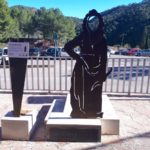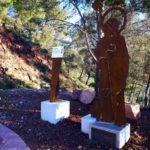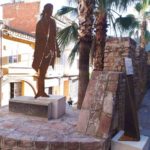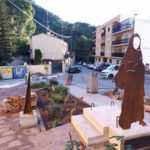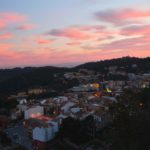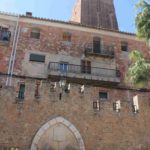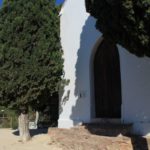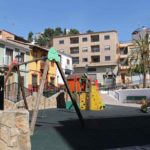Route of the sculptures (Serra, history and heritage)
This route is a journey through the cultural, ethnological and monumental heritage of town. Seven characters help us to interpret the inheritance that our ancestors left us.
This itinerary runs through the whole town of Serra to explore its rich cultural heritage. It starts at the Town council and it goes to the spring of La Salut, then to the Calvary, the Chapel and the sentry tower of L’Ermita.
From there, there are good views of the town and Serra Calderona. The descent takes us to the local parish, then to the La Font Square and the tower of El Senyor de la Vila. The itinerary goes up to the entrance of the town where the llavador is. The itinerary comes back again at the Tourist Information Centre, after passing by the Doctor Emilio Marín Park and the monument to the picapedrer (quarry worker).
![]() Itinerari circular
Itinerari circular![]() Distance: 3,5Km
Distance: 3,5Km![]() Estimated time: 1h 20min.
Estimated time: 1h 20min. Climb: 90m
Difficulty: bow, perfect to do it in family.
Interesting information:
La Calderona: The Sierra Calderona Natural Park receives the name of a famed actress lover of King Felipe IV.
L’Aiguadera: The quality of the springs of Serra was the origin of this traditional trade, that has long since disappeared.
Calvary: From the 9th century, its peculiar terraces make it quite a unique place.
Sant Roc: It forms part of the popular festive culture of the town, the night of “la Baixà” is one of the most magical of the year.
Chapel of Sant Josep i la Creu: It crowns the Calvary. If offers panoramic views on the town and the Calderona mountains. It is the starting point of the traditional Baixà de Sant Roc, which is listed as a local festivity of tourist interest.
Tower of L’Ermita: Arabic sentry tower from the 9th century. It was a part of the surveillance system of Serra’s Castle.
L’Espartera: Esparto grass was one of the traditional crafts related to the Sierra Calderona.
Church of Mare de Déu dels Àngels: Church from the late 18th century, of neoclassical style. It has a single nave.
El Cartoixà: The Portacoeli Charterhouse (s.XIII), was a firstclass political and religious centre.
Tower of El Senyor de la Vila: Defensive and military tower from the 9th century. It used to be a prison and was part of El Senyor de la Vila House (the Town Lord).
El Senyor de la Vila: The lords of Serra had their temporary residence in houses attached to the “Torre del Senyor” (s. IX).
Llavador (lavoir): It was built on 1938. Together with the lavoir of La Font (which had more capacity), it was one of the meeting and social points for the women in town.
Rei Yahia: In the castle of Serra, Yahia Al-Qadir king received the keys of the Kingdom of Valencia.
Altarpieces: Different ceramic altarpieces can be found following this itinerary. All of them are listed as relevant local heritage. At the spring of La Salut, there is the ceramic altarpiece which depicts the Sacred Heart; at La Font Square, a ceramic altarpiece of la Mare de Déu dels Àngels (the Virgin of the Angels); at the Doctor Domingo Square, a ceramic altarpiece of Sant Francesc and la Mare de Déu dels Àngels; and finally, at Sant Josep Street, there is a ceramic altarpiece dedicated to the teacher Ambrosio Cebrián.
A word of advice:
Take care of nature. Respect it.Plan you itinerary carefully beforehand. Do not underestimate the possible risks.
No one better than ourselves knows our limits. It is advisable to do itineraries according to our physical shape.
Bring a map, a GPS or a mobile app that works without signal. Your phone battery should be fully charged.
Tell someone where you are going and check the weather forecast.
You should pack you bag with water, some food, extra clothes, a torch and a small first aid kit.
Use proper shoes, a cap and sunscreen.
These itineraries are open during the whole year. In summer, however, it is convenient to avoid peak sun hours.
Save the number for emergencies: 112. In case of emergency, keep calm and call 112.

